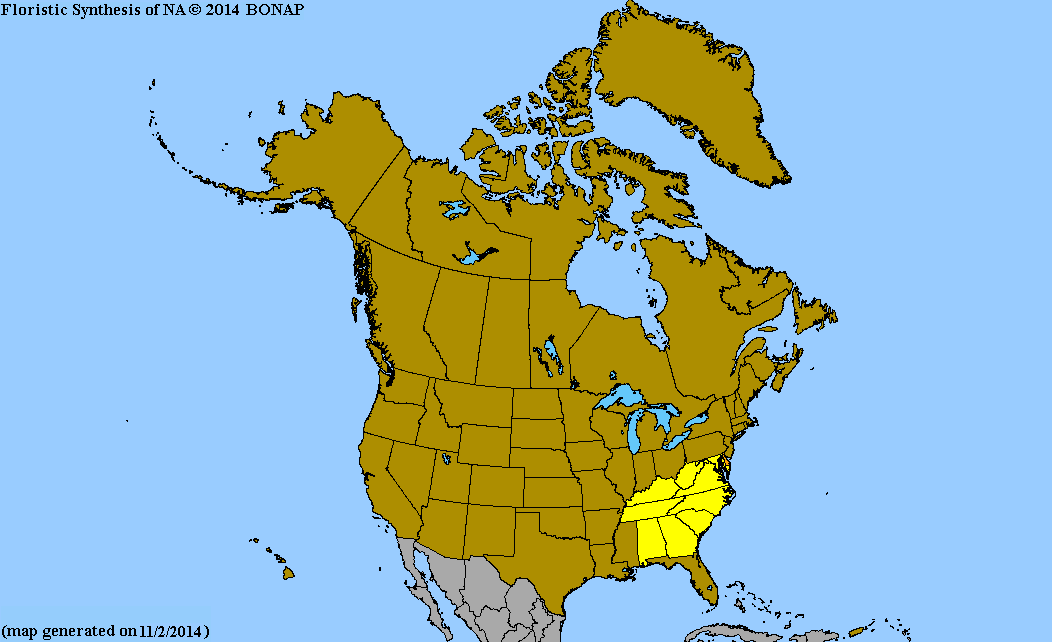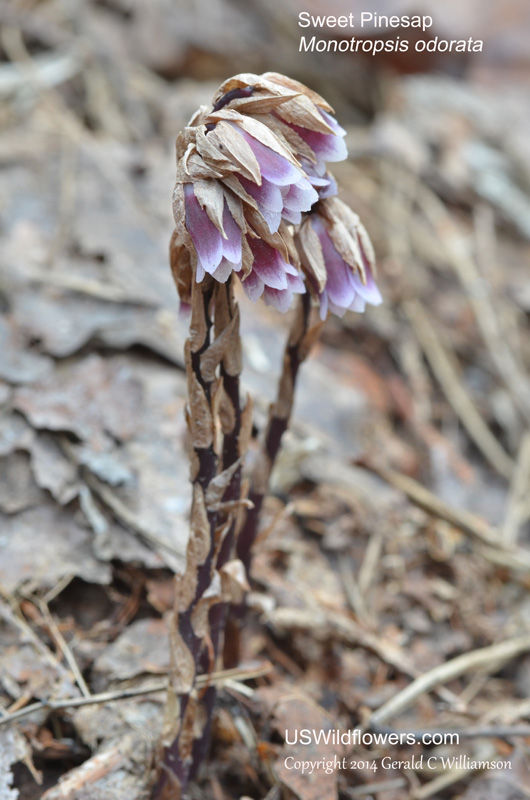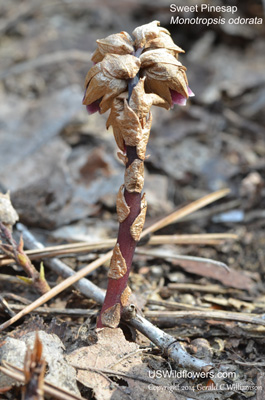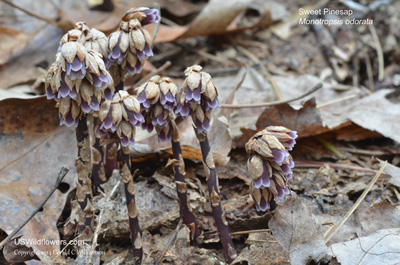Wildflowers of the United States | |||||||||||||
| |||||||||||||
Monotropsis odorata - Sweet Pinesap, Pygmy Pipes, Carolina beechdrops, Appalachian Pygmy Pipes. There are only 1 or 2 species in the Monotropsis genus; some authorities consider the fall-flowering form to be a separate species, M. reynoldsiae, while some classify them as a single species. The spring form blooms from early spring into early summer. The genus name indicates the similarity of Monotropsis to the Monotropa genus. The species epithet - odorata - refers to the strong, sweet aroma of the plant while in bloom. This plant is small and inconspicuous, sometimes not rising above the fallen leaves in its forest habitat, frequently upland woods under oaks and pines, often cohabiting with Rhododendron and Mountain Laurel. The coloration of Sweet Pinesap also adds to the difficulty in spotting it, and it is frequently smelled and not seen.
| Sweet Pinesap has no chlorophyll and is mycotrophic - it gets its nutrition from fungi which get their nutrition from the roots of trees. Both Monotropa and Monotropsis are mycotrophic, and have been classified together in a different family - Monotropaceae. While their move to Ericaceae has been somewhat controversial, apparently recent studies support that move. Monotropsis odorata is a rare plant of the southeastern U.S. It is endangered or threatened in Florida, Kentucky, Maryland, and Tennessee. Found in: AL, DE, FL, GA, KY, MD, NC, SC, TN, VA, WV Leave comments on Monotropsis odorata at this link.   Map courtesy of The Biota of North America Program. Map color key Search Our Database: Enter any portion of the Scientific, Common Name, or both. Do a general Google search of the entire site: #ad
| #ad
| | ||||||||||
|
Commercial / Cookie Notice Looking for Wildflowers for a specific state? Check here: | |||||||||||||
|
All content except USDA Plants Database map Copyright Gerald C. Williamson 2025 | |||||||||||||
Code Update 20230302



